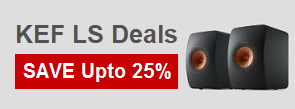Features
| Brand | TEAC Audio |
|---|
Tech Specs
Turntable Section
- Type Belt-drive
- Motor DC Motor
- Rotation Speed:33-1/3rpm, 45rpm
- Wow and flutters: 0.1%
- Signal-to-Noise ratio: 67dB (A-weighted,20KHz LPF)
- Platter: Die-cast aluminium, 30cm diameter
Tonearm Section
- Type: Static-balanced, S-shape with knife-edge bearings
- Effective tone-arm length: 223mm
- Anti-skating mechanism: Supported
- Stylus pressure range: 0 to 5g
- Compatible cartridge weight: 4.0g to 12g
- 14g to 23g (incl. head-shell)
Cartridge Section
- Type: MM-type (SUMIKO Oyster factory installed)
- Output voltage: 4.0mV (1kHz)
- Stylus pressure range: 1.5g to 2.5g (2.3g recommended)
- Cartridge weight: 5.3g
- Head-shell weight: 10g (incl. screws, nuts, and wires)
- Stylus life: approx. 300 hours (depending on conditions)
Analogue Outputs
- Connectors: RCA Pin jack x 1 pair (PHONO/LINE switchable)
- Output Voltage: PHONO EQ THRU 4.0mV (1kHz, 5cm/sec.)
- PHONO EQ ON 224mV (-13dBV)
USB Section
- Connector: USB B (DC 5V 100mA USB Bus power required)
- Audio Format: USB B (DC 5V 100mA USB Bus power required)
General
- Power: AC 100V to 240V
- Power consumption: 2W
- Standby power: less than 0.5W
- Overall dimensions; 420 x 117 x 356mm / 16.5” x 4.6” x 14.0” (dust cover closed)
420 x 381 x 402mm / 16.5” x 15.0” x 15.8” (dust cover opened)
- Weight: approx: 6.1kg
Product Description
The TEAC TN-4D-SE turntable features a low profile design along with a new brushless DC servo motor. The slimline motor allows the plinth to be sleek and stylish. Notably, the new motor is crystal-locked and has a very smooth rotation.
The turntable also has an S shaped tonearm, which is mounted on knife-edge, pivot-point bearings. It is made by SAEC, a renowned high-end tonearm manufacturer. Additionally, the unit comes with a built in phono preamp for MM cartridges. The preamp also uses high-end audiophile grade op-amp chips. Available in black or walnut.
S-shaped tonearm
The S-shaped tonearm has knife-edge, pivot-point bearings. It was developed by the SAEC Corporation, a high-end manufacturer of precision components. As a result, the sound is detailed with high resolution and accuracy.
There is also a built in phono preamp that allows you to connect the turntable to a line level input. The preamp uses very low noise, low distortion op-amp chips. The NJM8080 chip is made by the New Japan radio Corporation and is capable of extracting the finest music detail.
Precision motor
The brushless DC servo motor is driven by a sophisticated control circuit that eliminates cogging. Cogging is a fine pulsing that can cause wow and flutter. These are also known as servo motors. The coils are switched using transistors rather than by using a mechanic commutator. The control circuit uses a magnet so that the rotation speed can be controlled by a servo. As a result speed accuracy is very high.
Oyster cartridge
To get the best out of the vinyl the TN-4D-SE comes with a highly regarded Oyster MM cartridge. This is made by SUMIKO, one of the best known U.S. cartridge manufacturers. This cartridge is known for it’s musicality and is designed to extract every possible nuance from the record. Moreover, the cartridge comes pre-installed on the headshell so that you can just plug the unit in, and play, and the headshell is removable for quick cartridge changes.
What is motor cogging?
DC Electric motors have a number of magnetic poles that drive the rotation, in steps. This can result in a jerky motion also known as cogging. This fine pulsing manifests as wow in the music. Formerly the only way to eliminate this was to have a large number of poles. This resulted in large and bulky motors. Additionally, traditional motors that used brushes tended to be longer to contain the rotor. The TN-4D-SE uses a brushless DC motor that is relatively flat and thin.
Cartridge types
Two types of cartridge are commonly fitted to turntables. Moving magnet and moving coil. Moving magnet cartridges have a relatively high output of about 5mV. On the other hand, moving coil cartridges can have outputs of less than 1mV. They have the advantage of lower mass but require better leads to avoid noise pickup. This is due to the large amount of gain needed by MC preamps.
Additionally, records are cut in a non linear fashion, with boosted treble and reduced bass. This is done to stop strong bass frequencies from over-modulating the groove. It also means that top cut can be applied in the preamp. This has the effect of reducing surface noise.
Stylus types
Along with the cartridge the most important component is the stylus. These come in three basic shapes, conical, elliptical and Microlinear. Budget cartridges usually have conical tips. These are round in shape and have a larger contact area with the groove. Elliptical tips have the longest axis touching the groove walls. This gives a smaller contact area for better high frequency response and less record wear. The other more specialised type is known as Microlinear. This tip most resembles the cutting head so will have the most accurate tracking.











































































